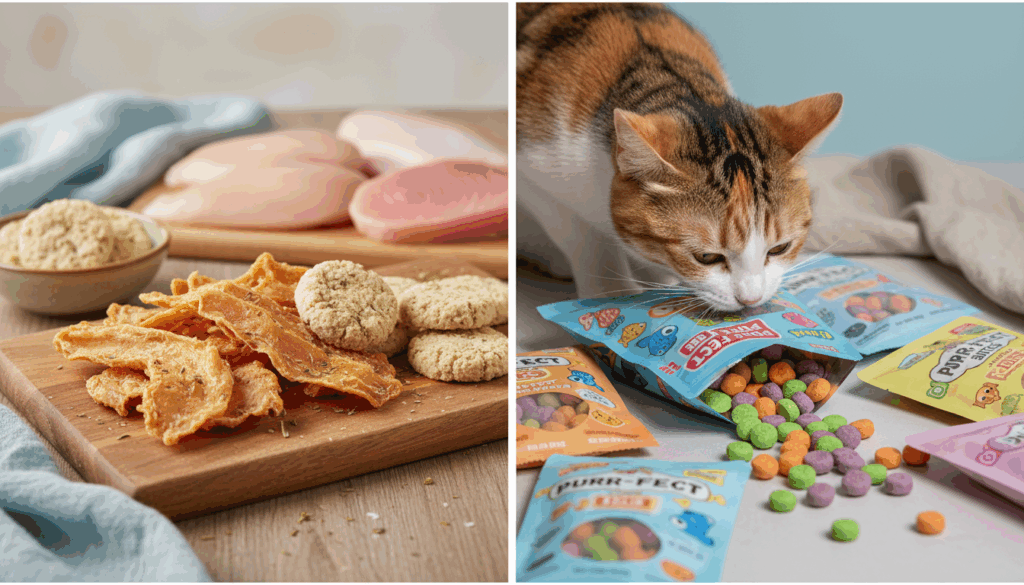Giving your cat a treat is one of life’s simple joys. That little look of anticipation, the happy purr—it’s a wonderful way to bond. But as a caring cat owner, you likely wonder if you’re making the best choice for their health. The aisle is full of colorful packages, and the internet is filled with DIY recipes. So, what’s the better option: homemade or store-bought cat treats?
This guide will walk you through the pros and cons of both choices. We will explore nutritional impacts, safety considerations, and how to find a happy medium. By the end, you’ll have the confidence to treat your cat in a way that is both fun and healthy.
Why Cat Treats Matter
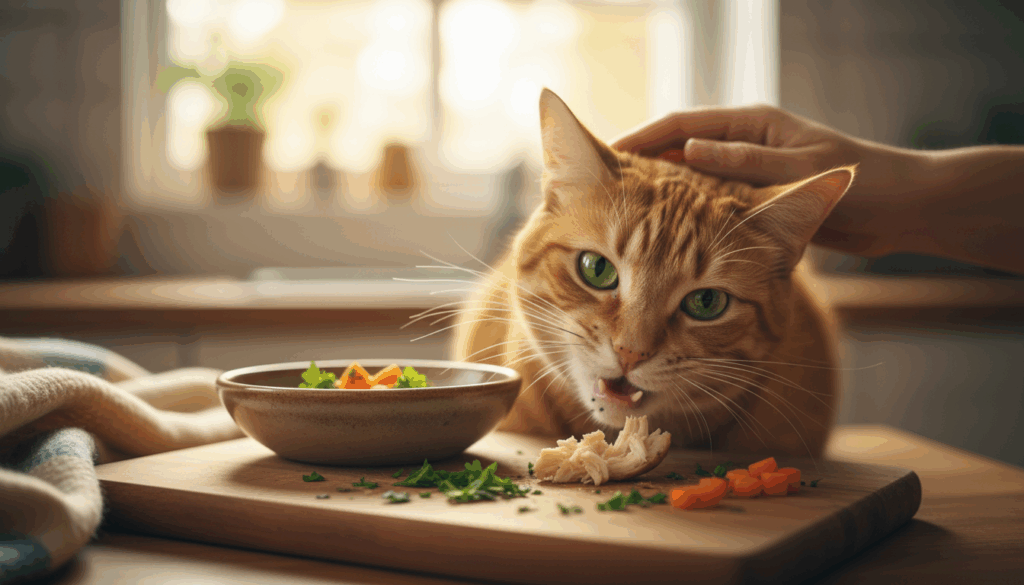
Treats are more than just tasty snacks; they are a part of your cat’s overall diet. While they should only make up a small fraction of their daily caloric intake (no more than 10%), the quality of those calories is important.
Low-quality treats can introduce a range of problems:
- Weight Gain: Many commercial treats are high in calories, sugars, and fats. Over time, this can lead to obesity, which puts cats at risk for diabetes, arthritis, and heart disease.
- Digestive Issues: Fillers like corn, wheat, and soy, along with artificial additives, can cause digestive upset in sensitive cats, leading to vomiting or diarrhea.
- Poor Nutrition: Some treats offer “empty calories,” providing little to no nutritional value. This can dilute the benefits of their balanced primary diet.
Choosing high-quality treats helps you avoid these issues and can even provide added benefits, like improved dental health or a shinier coat.
The Case for Homemade Cat Treats
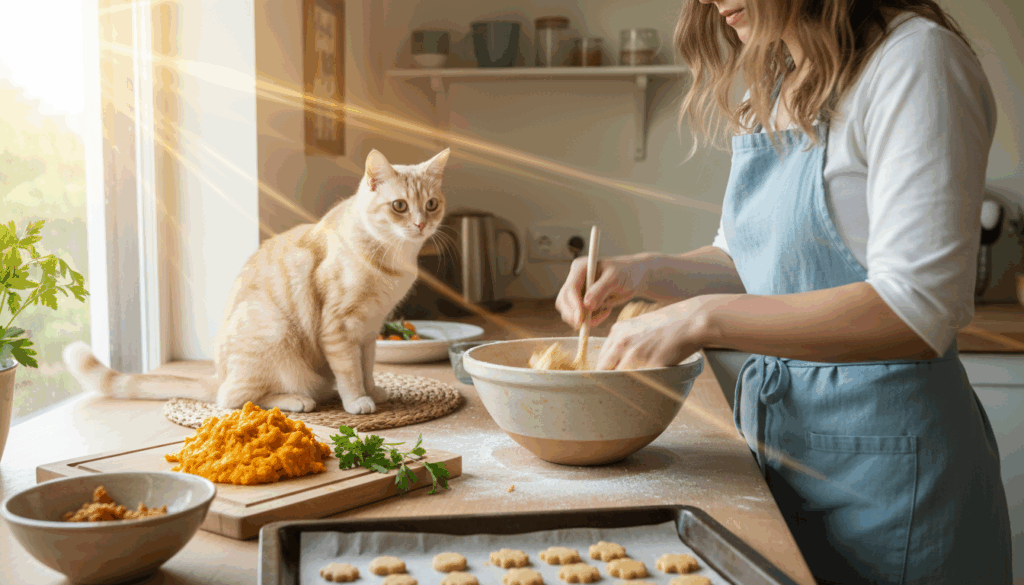
Making treats in your kitchen gives you ultimate control over what your cat eats. It’s an appealing option for owners who want to provide pure, simple nutrition and avoid questionable ingredients found in some commercial products.
The Advantages of Going DIY
- Complete Ingredient Control: You know exactly what’s in each treat. This is perfect for cats with food allergies, sensitivities, or specific health conditions like kidney disease that require a restricted diet. You can choose high-quality proteins and skip the fillers and artificial preservatives.
- Freshness and Quality: Homemade treats don’t need a long shelf life, so you can skip the preservatives required for mass-produced products. You can use fresh, human-grade ingredients that you would eat yourself.
- Cost-Effective: Making treats in batches can be more affordable than buying premium, single-ingredient commercial treats. A simple batch of dehydrated chicken or tuna treats costs very little to prepare.
- A Bonding Experience: The process of making treats can be a fun activity. While your cat can’t help you bake, the delicious smells from the kitchen will surely get their attention and approval.
The Challenges of Homemade Treats
- Time and Effort: Let’s be honest, our schedules are busy. Finding the time to shop for ingredients, prepare, bake, and clean up can be a significant commitment.
- Nutritional Imbalance: While you control the ingredients, it can be difficult to create a nutritionally balanced treat without guidance. It’s important to stick to pet-safe recipes and understand which foods are beneficial and which are harmful.
- Food Safety and Spoilage: Without preservatives, homemade treats have a much shorter shelf life. They must be stored properly in an airtight container, usually in the refrigerator or freezer, to prevent the growth of mold and bacteria.
Getting Started with Homemade Treats
If you’re ready to try making your own, here are some tips to ensure they are safe and healthy.
Safe Ingredients for Your Cat:
- Proteins: Plain, cooked chicken, turkey, salmon, tuna (packed in water), and lean beef are excellent choices.
- Vegetables: Small amounts of steamed or pureed carrots, pumpkin, or sweet potato can add fiber and vitamins. Pumpkin is especially good for digestive health.
- Grains: Oats and brown rice are generally safe in small quantities if your cat isn’t grain-sensitive.
Ingredients to AVOID:
- Onions, garlic, chives, and leeks
- Chocolate and caffeine
- Grapes and raisins
- Alcohol
- Xylitol (an artificial sweetener)
- Dairy products (most cats are lactose intolerant)
Essential Tools for Homemade Treats:
- Food Dehydrator: Perfect for making jerky-style treats from thin strips of meat or fish.
- Silicone Molds: These come in fun, bite-sized shapes and are great for baking or freezing soft treats.
- Blender or Food Processor: Useful for creating smooth purees from meat and vegetables.
The Advantages of Going DIY
Store-bought treats offer unmatched convenience and a wide variety of options. For many cat owners, they are a practical and reliable way to spoil their pets without the extra work.
The Advantages of Store-Bought Treats
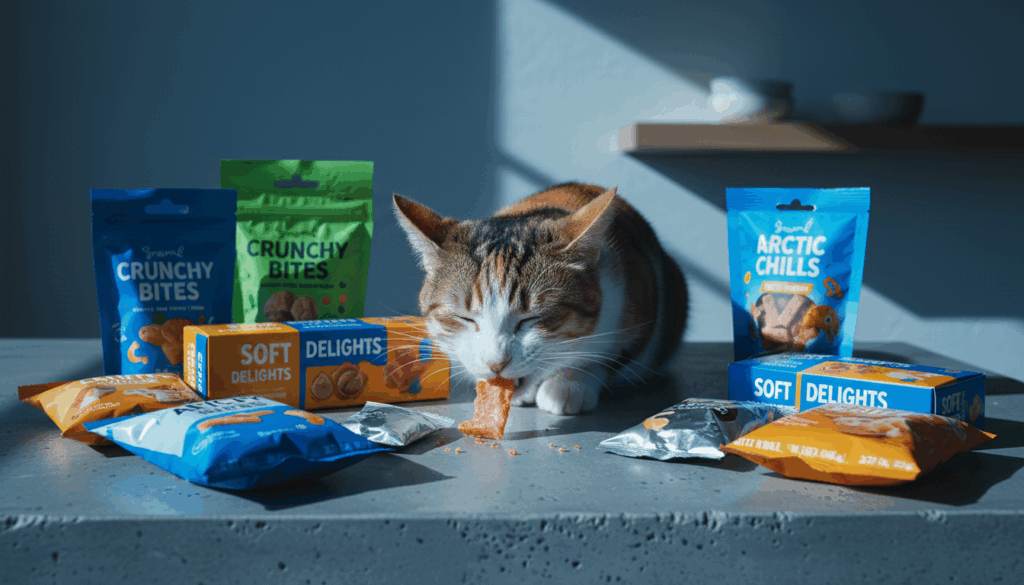
- Convenience: Simply open a bag and serve. There’s no prep or cleanup involved, making it easy to give your cat a treat at a moment’s notice.
- Nutritionally Formulated: Reputable brands often work with veterinary nutritionists to create treats that are balanced and fortified with vitamins and minerals. Many are formulated to meet AAFCO (Association of American Feed Control Officials) guidelines.
- Variety and Function: The market offers an incredible range of options, including crunchy, soft, freeze-dried, and lickable treats. You can also find functional treats designed for specific purposes, such as:
- Dental Treats: Designed to reduce tartar and plaque buildup (e.g., Greenies).
- Hairball Control Treats: Contain ingredients like fiber to help move hair through the digestive tract.
- Calming Treats: Infused with ingredients like L-theanine or tryptophan to help reduce anxiety.
- Portion Control: Many treats come in single-serving packs or have clear feeding guidelines on the package, which helps prevent overfeeding.
The Downsides of Store-Bought Treats
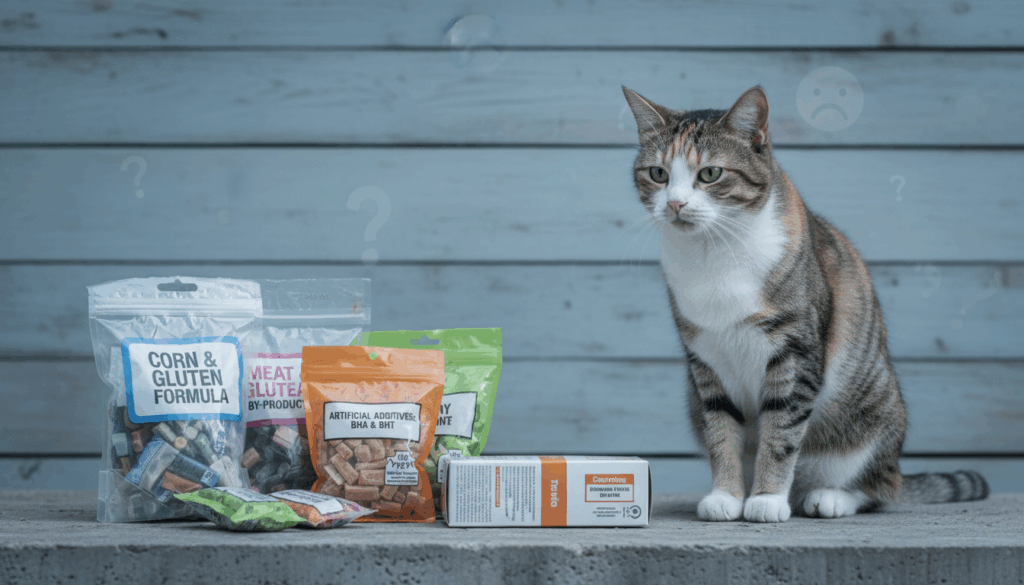
- Questionable Ingredients: The biggest drawback is the potential for low-quality ingredients in cheaper brands. These can include meat by-products, fillers like corn and wheat gluten, artificial colors, and chemical preservatives like BHA and BHT.
- High Calorie Content: Some popular treats are very high in calories, similar to junk food for humans. It’s easy to overfeed these, contributing to weight gain.
- Cost: Premium, high-quality treats made with limited ingredients can be expensive, especially if you have multiple cats.
How to Choose a High-Quality Store-Bought Treat
Navigating the pet food aisle can be overwhelming. Here’s what to look for on the label to make a healthy choice:
- Look for a Named Protein First: The first ingredient should be a specific meat, like “chicken,” “tuna,” or “salmon,” not a generic term like “meat by-products.”
- Avoid Fillers: Try to avoid treats where corn, wheat, or soy are listed as primary ingredients.
- Check for Artificial Additives: Steer clear of artificial colors (e.g., Red 40, Yellow 5), flavors, and chemical preservatives. Natural preservatives like tocopherols (vitamin E) are a better option.
- Choose Low-Calorie Options: Many brands list the calorie count per treat. Look for options with 2 calories or less per treat.
- Consider Freeze-Dried: Freeze-dried treats (like PureBites or Vital Essentials) are often single-ingredient and retain most of their nutritional value without needing preservatives.
Final Thoughts
There’s no one-size-fits-all answer. A combination of safe homemade treats and high-quality store-bought options often works best for cats.
Whether you choose to bake, dehydrate, or buy ready-made, the key is moderation and high-quality ingredients. With the right treats, your cat can stay healthy, happy, and excited at snack time — and you can feel confident knowing every bite counts.

